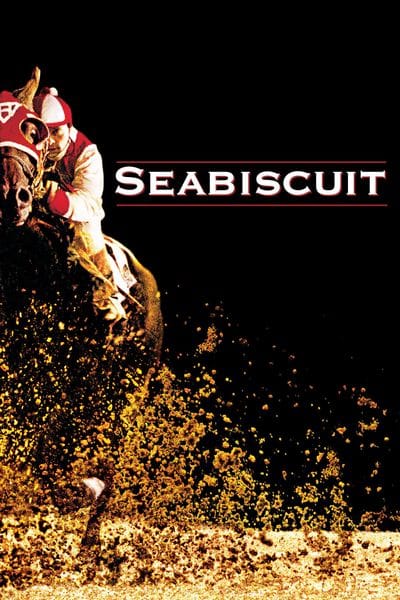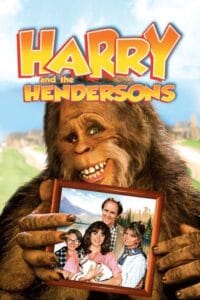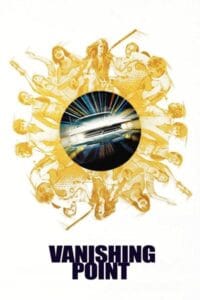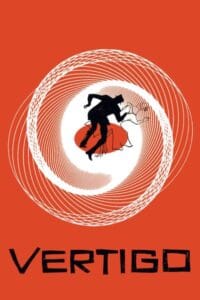Have you ever wondered how films expertly bring to life the rich and diverse settings of their stories? What exactly makes a location the perfect backdrop for a celebrated racehorse like Seabiscuit, whose journey captivated audiences? Based on a true story, the film “Seabiscuit” not only captures the exhilarating spirit of racing but also immerses viewers in the historical landscapes of America during the Great Depression, a time marked by hardship and resilience.
The filmmakers meticulously selected locations that reflected the era’s authentic atmosphere, from the dusty tracks where races took place to the quaint towns that resonated with the struggles and triumphs of the people. This article will explore the various filming locations that played a crucial role in creating the film’s authentic aura, highlighting how each setting contributed to the narrative and emotional depth of Seabiscuit’s inspiring story. We’ll delve into the significance of these places and how they helped transport audiences back to a pivotal time in American history, enhancing the film’s impact and resonance.
City Locations
“Seabiscuit” was filmed in several cities across the United States, each chosen for its unique contribution to the story. One of the primary locations was the iconic Santa Anita Park in Arcadia, California. This racetrack, with its stunning Art Deco architecture and picturesque setting, served as the backdrop for many racing scenes. Filmmakers took great care to recreate the look of the 1930s, ensuring that everything from the costumes to the signage reflected the era. Additionally, the film utilized locations in Los Angeles, including Hollywood studios where much of the interior work took place, and set a tone that resonated with the film’s themes of resilience and passion.
Location Types
“Seabiscuit” utilized a diverse range of location types to enhance its storytelling. Outdoor settings, such as the vast California plains and ranches, were crucial to portraying the rugged spirit of the characters. The filmmakers sought out authentic horse ranches, where scenes depicting the training and care of Seabiscuit could feel real and tangible. In stark contrast, certain urban locations were also vital, as they represented the hustle and bustle of life during the Depression. These settings were instrumental in contextualizing the challenges faced by the characters, creating a juxtaposition between the pursuit of dreams and the harsh realities of life.
Location Styles
The visual style of “Seabiscuit” plays a crucial role in immersing the viewer in the period and mood of the story. The cinematography used a mix of wide-angle shots to capture the grandeur of the racetracks and tight shots for more intimate character moments. The colour palette was intentionally muted, reflecting the somber tones of the Great Depression era. Dusty earth tones and greys dominated outdoor scenes, while warmer colours were used indoors to evoke a sense of comfort amid adversity. The filmmakers’ attention to detail in location styles enhanced the film’s storytelling, inviting viewers to feel as if they were stepping back in time.
About Seabiscuit
Seabiscuit was not just a racehorse; he became a powerful symbol of hope for many during one of America’s most challenging periods—the Great Depression. Born in 1933, Seabiscuit was initially overlooked due to his small stature and unassuming demeanor, which led many to underestimate his potential. However, his remarkable speed, fierce determination, and incredible tenacity on the racetrack soon turned him into a champion, defying all expectations and inspiring a nation.
The film elegantly chronicles his journey, weaving in the personal stories of his owner, Charles Howard, a successful businessman who faced his own struggles; his trainer, Tom Smith, a wise and compassionate mentor who saw greatness in Seabiscuit; and his jockey, Red Pollard, whose own hardships mirrored those of the horse he rode. Filmmakers meticulously chose locations that reflected the highs and lows of this inspiring story, including the bustling racetracks filled with eager crowds and the quiet stables where Seabiscuit trained. These choices helped to enhance the emotional depth of the narrative, making the tale relatable and ensuring it resonates deeply with audiences, who find solace and inspiration in the story of an underdog triumphing against all odds.
The Pollard family storytime scene in Seabiscuit
One poignant moment in the film is the Pollard family scene, where Red shares heartfelt stories with his family, reflecting on their shared experiences and dreams. This beautifully crafted moment not only serves to deepen the viewer’s understanding of Red as a character but also captures the intimacy and importance of family during trying times. The scene was filmed in a small homestead, specifically chosen to represent a typical 1930s family dwelling, complete with period-appropriate furnishings and decor that transport viewers back in time. Its authenticity allows viewers to connect with Red’s backstory and the struggles he faces throughout the film, evoking a sense of nostalgia and empathy for the challenges of maintaining family bonds in the face of adversity. The emotional weight of this scene resonates deeply, highlighting the enduring power of family support amidst life’s hardships.
Tom guiding the Howards about purchasing racehorses scene in Seabiscuit
Another key scene features Tom Smith advising Charles and Marcela Howard on their approach to purchasing racehorses. This interaction exemplifies the blend of expertise and intuition in the racing world. Filmed in a rustic barn setting, the location evokes a sense of tradition and knowledge passed down through generations. The cinematography emphasizes the close-knit relationship between Tom and the Howards, reflecting their shared vision and aspirations for Seabiscuit.
Tom sees Seabiscuit the horse for the first-time scene in Seabiscuit
The scene where Tom first encounters Seabiscuit serves as a pivotal turning point in the film, marking the beginning of an extraordinary bond between man and horse. Shot in a sunlit paddock, the vibrant natural environment enhances the moment’s significance, immersing the audience in the warmth and promise of a new beginning. This picturesque location not only showcases Seabiscuit’s humble beginnings, reflecting the simplicity of his early life, but it also highlights Tom’s keen eye for potential in what others might easily overlook. While many see a scruffy underdog, Tom perceives a champion waiting to emerge. The use of natural light in this scene symbolizes hope and possibility, casting a golden hue over the landscape and evoking the sense of optimism that accompanies new ventures. This carefully crafted atmosphere sets the stage for the incredible journey that lies ahead, not just for Seabiscuit, but for all the people who believe in him, showcasing how dreams can flourish in even the most unlikely circumstances.
Red and Seabiscuit galloping over a stone bridge scene in Seabiscuit
In one of the film’s most visually striking sequences, Red and Seabiscuit gallop majestically over a quaint stone bridge, their powerful strides echoing through the air. This scene, meticulously filmed in a picturesque bucolic countryside location, beautifully captures the essence of freedom and the deep bond that exists between horse and rider. The cinematographer’s thoughtful choice to feature sweeping landscapes, with rolling hills and vibrant greenery, combined with the dynamic movement of the characters, creates a breathtaking visual narrative that immerses the viewer. The sunlight glistens off Seabiscuit’s coat as they race, evoking a sense of exhilaration. This moment conveys not only the thrill of racing but also the profound sense of liberation that comes with pursuing one’s passion against the odds, reminding us of the beauty of chasing dreams and the connections we forge along the way.
Tom complains about Red being blind in one eye scene in Seabiscuit
A pivotal moment in the film occurs when Tom expresses his deep-seated concerns about Red’s blind eye, a metaphorical representation of his struggles and the harsh realities they both face. This scene was shot in a dimly lit room, which not only enhances the somber atmosphere but also accentuates the weight of the conversation they are having. The intimate setting, with shadows playing on the walls, allows the characters’ emotions to surface powerfully, revealing their vulnerabilities and strengthening the viewer’s connection to their struggles. This raw exchange highlights the fears and hopes that dwell within them, making the audience feel every ounce of their shared burden. The careful selection of location for this moment further underscores the themes of trust and vulnerability that permeate the narrative, reminding us that in moments of darkness, genuine connection can shine through.
Charles Howard gives a speech at the station scene in Seabiscuit
In a powerful and emotionally charged scene, Charles Howard delivers an inspiring speech at the station, a moment that resonates deeply with both the characters and the audience. The filmmakers intentionally chose a bustling outdoor train station, teeming with life, to vividly capture the energy and excitement of the crowd gathered to hear him speak. This location is not just a setting; it symbolizes the hopes and aspirations of the diverse individuals present, each facing their own struggles during the challenging times of the Great Depression. The cinematography masterfully utilizes the backdrop of the station, with its trains coming and going, to heighten the drama of the moment. The camera captures the determined faces of the crowd, reflecting the spirit of resilience and hope that defined Seabiscuit’s legacy. As the speech unfolds, the atmosphere becomes charged with a sense of unity and purpose, showcasing the profound impact that Seabiscuit had on the lives of those who believed in him during such trying times.
Conclusion
The filming locations of “Seabiscuit” are meticulously chosen to reinforce the film’s themes of hope, resilience, and the determination of both horse and human. Through carefully selected city locations, diverse location types, and unique styles, the filmmakers created an authentic portrayal of the era, the sport of horse racing, and the remarkable journey of Seabiscuit. Each scene filmed in these locations serves to strengthen the narrative, drawing audiences into the inspiring world of one of America’s most beloved racehorses. By combining captivating visuals with a powerful story, “Seabiscuit” remains a testament to the impact of perseverance, hope, and the unbreakable bonds formed between humans and horses.







